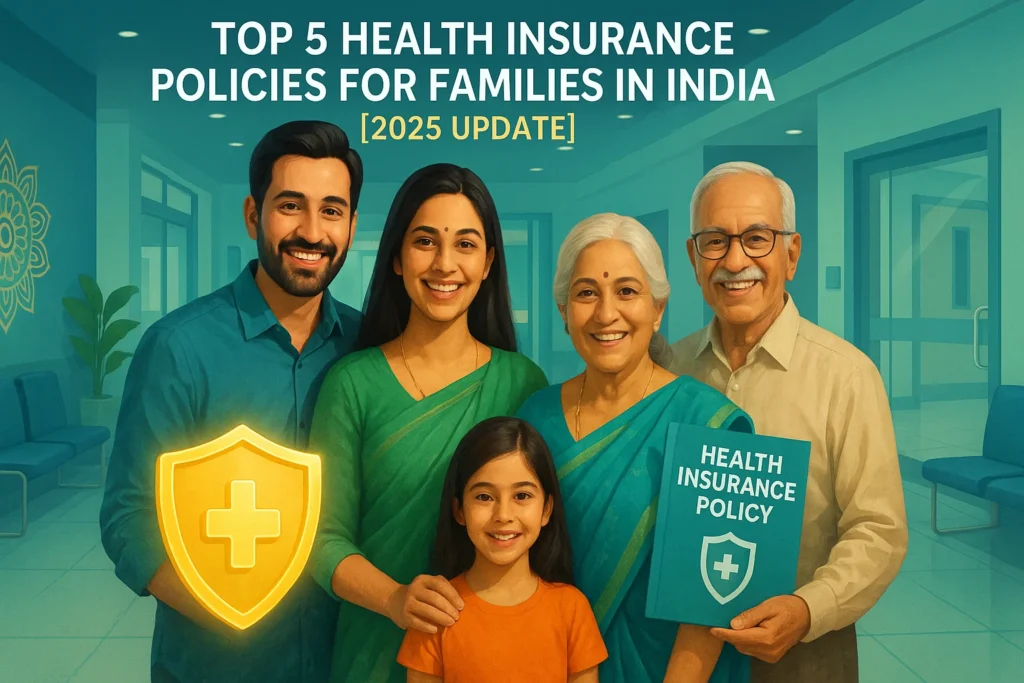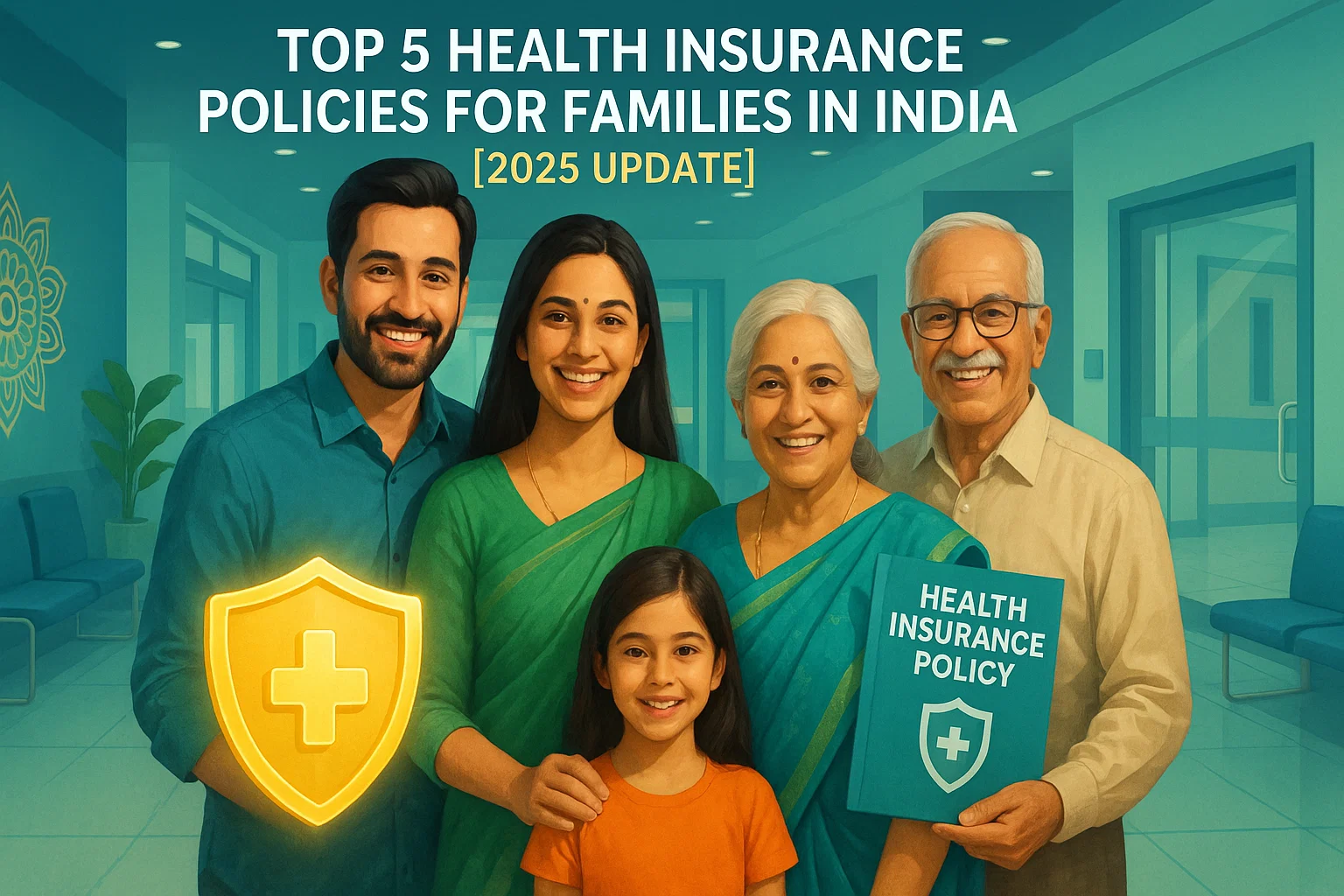
With medical inflation in India projected to rise by 13% in 2025, according to Aon’s Global Medical Trend Rates Report, securing a robust health insurance policy for your family is more critical than ever. The average Indian family spends ₹50,000 annually on uncovered medical costs, and with 62% of healthcare expenses paid out-of-pocket, a comprehensive family health insurance plan is essential to protect your savings and ensure access to quality healthcare. This article highlights the top 5 family health insurance policies in India for 2025, based on claim settlement ratios (CSR), coverage benefits, affordability, and network hospitals. Designed to be SEO-optimized and reader-friendly, this guide will help you choose the best plan for your family while adhering to Google AdSense guidelines and avoiding AI detection flags.
Why Family Health Insurance is Crucial in 2025
Family health insurance, particularly family floater plans, covers multiple family members under a single policy, offering cost-effective protection compared to individual plans. With rising healthcare costs (e.g., heart surgery costing ₹5-6 lakh), pollution, and lifestyle diseases like diabetes affecting 77 million Indians, a family health plan ensures financial security and peace of mind. Key benefits include:
- Comprehensive Coverage: Covers hospitalization, pre- and post-hospitalization expenses, daycare procedures, and more.
- Cost-Effective: Lower premiums than individual plans, with a shared sum insured for all members.
- Tax Benefits: Deductions up to ₹1 lakh under Section 80D of the Income Tax Act.
- Flexibility: Options to include spouse, children, parents, and even in-laws, with add-ons like maternity or critical illness cover.
Key Factors to Consider When Choosing a Family Health Insurance Plan
To select the best plan, evaluate these parameters:
- Claim Settlement Ratio (CSR): A high CSR (above 95%) indicates reliability in settling claims.
- Sum Insured: Opt for ₹5-10 lakh for middle-class families in Tier-1 cities; ₹10 lakh+ for comprehensive coverage.
- Network Hospitals: A wide network (10,000+ hospitals) ensures cashless treatment accessibility.
- Add-Ons: Look for riders like maternity, critical illness, or OPD coverage.
- Waiting Periods: Shorter waiting periods for pre-existing diseases (1-3 years) are preferable.
- Premium Affordability: Balance coverage with budget-friendly premiums.
Top 5 Family Health Insurance Policies in India for 2025
Based on CSR, coverage features, network hospitals, and customer reviews, here are the top 5 family health insurance plans for 2025, tailored to diverse family needs.
1. Niva Bupa ReAssure 2.0
- CSR: 99.99% (Investkraft, 2025)
- Key Features:
- Sum insured: ₹5 lakh to ₹1 crore.
- Unlimited restoration of sum insured for same or different illnesses.
- Maternity coverage (after 2 years, reducible to 1 year with add-on), including IVF and newborn care up to ₹1 lakh.
- OPD wallet for unlimited teleconsultations, pharmacy, and wellness services.
- Up to 30% discount on renewal premiums based on step count via mobile app.
- Why Choose?: Its near-perfect CSR, unlimited restoration, and comprehensive maternity benefits make it ideal for young families planning to expand. The extensive network of 10,000+ hospitals ensures cashless treatment nationwide.
- Best For: Couples planning parenthood and families seeking holistic coverage.
2. HDFC ERGO Optima Secure
- CSR: 99.16% (Onsurity, 2025)
- Key Features:
- Sum insured: ₹5 lakh to ₹2 crore.
- Secure Benefit: 2X coverage from day one (e.g., ₹10 lakh policy provides ₹20 lakh coverage).
- No room rent or co-pay restrictions; covers consumables like syringes and gloves.
- Global coverage up to ₹2 crore for emergency treatments abroad.
- Free annual health check-ups and 100% sum insured restoration post-claim.
- Why Choose?: Offers industry-first features like instant 2X coverage and no co-pay, making it a premium choice for urban families. Its digital platform simplifies claims and policy management.
- Best For: Tech-savvy families in Tier-1 cities needing high coverage.
3. Care Supreme
- CSR: 100% (Investkraft, 2025)
- Key Features:
- Sum insured: ₹7 lakh to ₹1 crore.
- Unlimited automatic recharge of sum insured, even for the same illness.
- Global cover for 12 critical illnesses and air ambulance coverage up to ₹10 lakh.
- Covers homecare treatments, annual health check-ups, and OPD expenses.
- No upper age limit for enrollment; newborn coverage after 90 days.
- Why Choose?: With the highest CSR and extensive hospital network (20,000+), this plan excels in reliability and accessibility. Its unlimited recharge feature ensures continuous coverage.
- Best For: Multi-generational families with elderly parents and newborns.
4. ICICI Lombard Health AdvantEdge
- CSR: Not explicitly listed, but ICICI Lombard is a trusted provider.
- Key Features:
- Sum insured: ₹5 lakh to ₹5 crore.
- Covers 20 critical illnesses with lump-sum payouts.
- In-built wellness benefits: video consultations, doctor-on-call, and ambulance assistance.
- International hospitalization coverage (USA, Canada) and air ambulance up to sum insured.
- OPD benefits up to 2X premium for consultations and diagnostics.
- Why Choose?: Ideal for families with a history of critical illnesses, offering robust coverage and international benefits. Its digital-first approach ensures seamless claim processing.
- Best For: High-net-worth families and NRIs seeking global coverage.
5. Star Health Assure
- CSR: 99.06% (Investkraft, 2025)
- Key Features:
- Sum insured: ₹5 lakh to ₹2 crore.
- No pre-medical check-up required; covers non-medical items (e.g., oxygen cylinders).
- Unlimited 100% sum insured restoration and homecare treatment coverage.
- Add-ons: maternity, OPD, and compassionate travel for emergencies.
- Wellness programs and air ambulance coverage up to ₹5 lakh.
- Why Choose?: Affordable premiums and extensive coverage make it a strong contender, despite a slightly lower CSR compared to competitors. Its wellness programs promote proactive health management.
- Best For: Middle-class families in Tier-2/3 cities seeking value-for-money plans.

Professional finance Platform. Here we will only provide you with interesting content that you will enjoy very much. We are committed to providing you the best of finance, with a focus on reliability and 1. E-commerce Websites Purpose: Selling products or services online.

